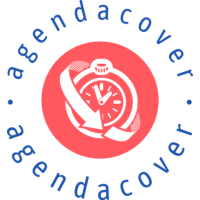In a world that’s always on the go, managing time effectively has become crucial. Whether you’re a busy professional, a student, or a multitasking parent, time management tools can be your secret weapon. They’re designed to streamline your tasks, enhance productivity, and ultimately, free up your time.
From digital calendars and project management apps to traditional planners, there’s a myriad of options available. But how do you know which one’s right for you? This article will walk you through some of the best time management tools out there, helping you make an informed decision. So, let’s dive in and explore how you can take control of your time, and by extension, your life.
Time Management Tools
Criteria for Evaluating Tools
 Choosing a time management tool depends on specific needs and preferences. Not all tools suit everyone; hence, there are several factors one considers when deciding on a tool.
Choosing a time management tool depends on specific needs and preferences. Not all tools suit everyone; hence, there are several factors one considers when deciding on a tool.
- Usability: A good time management tool is user-friendly. The tool’s interface should be easy to understand and navigate, ensuring that tasks can be added, viewed, and changed without hassle.
- Features: Necessary features include calendars, to-do lists, reminders, customization options, and project management capacities. Advanced tools might also provide features like time tracking, analytics, and collaborative functions.
- Integration: The tool ideally integrates with other applications and services used regularly. This integration capabilities foster a more streamlined workflow.
- Cost: While some tools offer free versions, others come at a cost. It’s crucial to assess if the features provided justify the pricing.
The Rise of Digital Time Management Tools
Advantages of Digital Over Analog Tools
 When pitted against their analog counterparts, digital time management tools surpass them in versatility, scalability, and connectivity. For instance, while paper-based calendars and diaries cap out at the year’s end, digital tools offer unending timeline capabilities, making future planning a breeze.
When pitted against their analog counterparts, digital time management tools surpass them in versatility, scalability, and connectivity. For instance, while paper-based calendars and diaries cap out at the year’s end, digital tools offer unending timeline capabilities, making future planning a breeze.
Digital tools shine not only on their own but also due to their seamless integration with other online services. It’s commonplace for these time management tools to harmonize with online email clients, project management software, or cloud hosting services. For instance, many businesses now rely on time clock solutions that combine mobile punch-ins, GPS tagging, and real-time cloud syncing to simplify workforce tracking. These systems often include biometric verification and payroll integration, supporting both compliance and operational accuracy for modern teams. As more organizations modernize their operations, digital tools are quickly becoming the new standard for managing teams and productivity.
Top Time Management Tools of The Year
Task Managers and To-Do List Apps
Task managers and to-do list apps streamline tasks by offering meticulous organization. These applications, by simplifying workflows, smooth out the road to productivity. Examples abound, but let’s point out prominent ones like Asana and Todoist.
Asana turns tasks into manageable to-dos, ensuring tasks don’t seem daunting. It’s easy-to-use interface, coupled with multi-platform support, affirms its popularity among users.
Calendar and Scheduling Apps
For those facing challenges in managing their schedule, calendar and scheduling apps offer indispensable assistance. By consolidating calendar activities and building timelines, these applications bring order to chaos. Let’s highlight two such tools—Google Calendar and Outlook Calendar.
Google Calendar, known for its integration with popular apps like Google Tasks and Google Keep, plays a crucial role in managing professional and personal schedules. Google’s robust system ensures that scheduling overlaps are history.
Features to Look for in Time Management Tools
User Interface and Experience
 A significant factor to consider in time management tools is their user interface and user experience. Good design leads to a smooth user experience, making it easy for users to navigate through options and functions. For instance, in a tool like Todoist, bold colors, and clear, readable fonts are used to highlight critical tasks, enhancing overall user experience.
A significant factor to consider in time management tools is their user interface and user experience. Good design leads to a smooth user experience, making it easy for users to navigate through options and functions. For instance, in a tool like Todoist, bold colors, and clear, readable fonts are used to highlight critical tasks, enhancing overall user experience.
Another key feature to look for is customization and flexibility. Tools like Toggl and Asana offer comprehensive options for customization, accommodating different workflow styles. Users can assign color codes to different projects, tag colleagues on specific tasks, and create contingency plans if deadlines aren’t met.
Need To Know
It’s undeniable that time management tools like Toggl, RescueTime, Google Calendar, Trello, and TimeDoctor have revolutionized the way we manage our tasks and optimize our workflows. They’re not just for personal use, but they’re also powerful aids in professional settings. With their ability to identify workflow gaps and monitor productivity, they’re an asset to any team.



